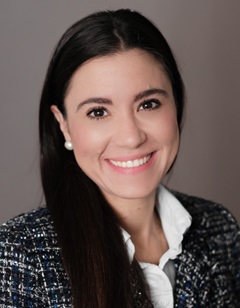
In a guest piece for NeuroNews, Carmen Parra-Fariñas (Toronto, Canada) discusses some of the key considerations that distinguish the growing, dedicated field of paediatric interventional neuroradiology (INR) from the treatment of adult neurovascular disease patients.
Neurovascular pathologies are a significant cause of brain injury in the paediatric population, resulting in substantial mortality and devastating physical and mental effects on survivors. The emotional and economic costs impose lifelong consequences on patients, families, and society as a whole.
Anatomically and physiologically, children differ from adults. In the case of brain vascular diseases, aetiologies, natural histories and treatment strategies are disparate from adult homologue diseases. Neuroendovascular surgical interventions in children demand not only a thorough understanding of neurovascular anatomy, pathology and haemodynamics but also manual dexterity—leading to a steep learning curve. Additionally, the psychological challenges involved in treating children with life-threatening diseases require approaches to help reduce distress for children and their families. These conditions necessitate care in high-volume paediatric centres by a dedicated neurovascular care team with expertise in diagnosis and management, from the antenatal period through adolescence into early adulthood.
Numerous recent advances in our understanding of these disorders, as well as in neuroendovascular surgical techniques and devices, have improved outcomes and opened doors to treat conditions previously considered untreatable. Multidisciplinary collaboration and innovative research will further enhance our current understanding of paediatric neurovascular diseases and create new treatment paradigms that will be at the forefront of the discipline.
Tackling challenges
Paediatric neurointervention encompasses a broad pathological spectrum including age- and physiology-specific conditions at foetal, neonatal, infantile, toddler and school-going ages. Furthermore, the haemodynamic component of these diseases varies greatly. Broadly, paediatric neurovascular diseases can be divided into vaso-occlusive lesions, haemorrhagic lesions, drivers of hydrovenous dysfunction, and drivers of neonatal cardiopulmonary failure.
The clinical presentation, diagnosis and treatment of neurovascular disorders in children require a comprehensive understanding of specific neurovascular anatomy, aetiologies, pathomechanisms, and physiology, which differ vastly from those in adults. Addressing the psychological challenges of treating children with complex pathologies demands a uniquely tailored support approach. Risk-benefit decisions, ethical considerations and family-oriented care are paramount drivers of care in a paediatric setting.
Conversely, persistently encountering intricate cases and observing the resilience of children and families amidst their suffering instils in the healthcare team a profound sense of admiration and gratitude. The optimal and holistic management of these diseases in children therefore requires a multidisciplinary team of paediatric neurovascular experts. Moreover, exposure of neurointerventional operators to paediatric endovascular diseases and procedures is limited outside of large paediatric centres. Treatment planning and technical considerations are key to success. Special considerations for paediatric patients include sedation and anaesthesia, radiation dosage, contrast agents, equipment and device optimisation, and vascular access.
Exploring key topics and anticipating the future
Over the past few decades, significant advances in diagnosis and treatment have greatly improved our understanding and awareness of paediatric neurovascular diseases. There has been substantial progress in neuroimaging techniques including quantitative magnetic resonance imaging (MRI) for assessing vascular anatomy and brain blood flow, leading to advanced microsurgical and endovascular techniques to restore flow or repair vascular lesions. Rapid acceleration of device technology has increased the repertoire of techniques and strategies that can be safely employed in paediatric procedures. Several diseases that previously had a dismal outcome are now treated successfully by dedicated paediatric neurointerventionists due to increased understanding of these complex conditions and their multiple clinical facets.
Paediatric neurovascular clinical developments have also been supported by remarkable discoveries in vascular genetics, sparking discussions about medical treatments that were previously inconceivable. Recent advancements in intrauterine endovascular treatment for high-flow vein of Galen malformations, and the potential for medical treatment based on genetic evaluation and vascular anomaly blood samples, represent significant progress and open exciting possibilities for the future. Additionally, incorporating 3D-printing technology into treatment planning and training offers new opportunities for specialised education in this field—which is difficult to achieve outside high-volume paediatric institutions.
Multidisciplinary collaboration and decision-making for every child, in a prompt fashion, as well as research and education for novel diagnostic and therapeutic strategies to improve disease outcomes and the patient-family experience, are key. Given the necessity of evaluating and treating neurovascular diseases in children—which span a wide diversity of genetic, developmental, inflammatory and traumatic causes—paediatric neurointerventional teams have the potential to lead in generating, advancing and translating novel diagnostic and therapeutic techniques for these diseases.
Carmen Parra-Fariñas is an interventional and diagnostic neuroradiologist in the Divisions of Neuroradiology and Image Guided Therapy within the Department of Diagnostic and Interventional Radiology—and a project investigator in the Research Institute—at The Hospital for Sick Children (SickKids) in Toronto, Canada. She is also an assistant professor and clinician investigator in the Division of Neuroradiology within the Neuroimaging, Department of Medical Imaging, at the University of Toronto.
The author declared no relevant disclosures.










